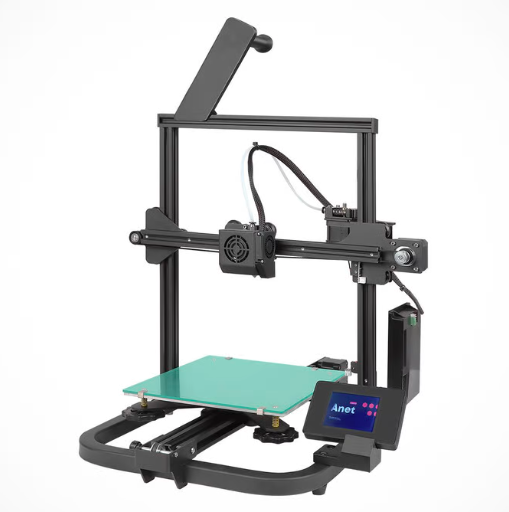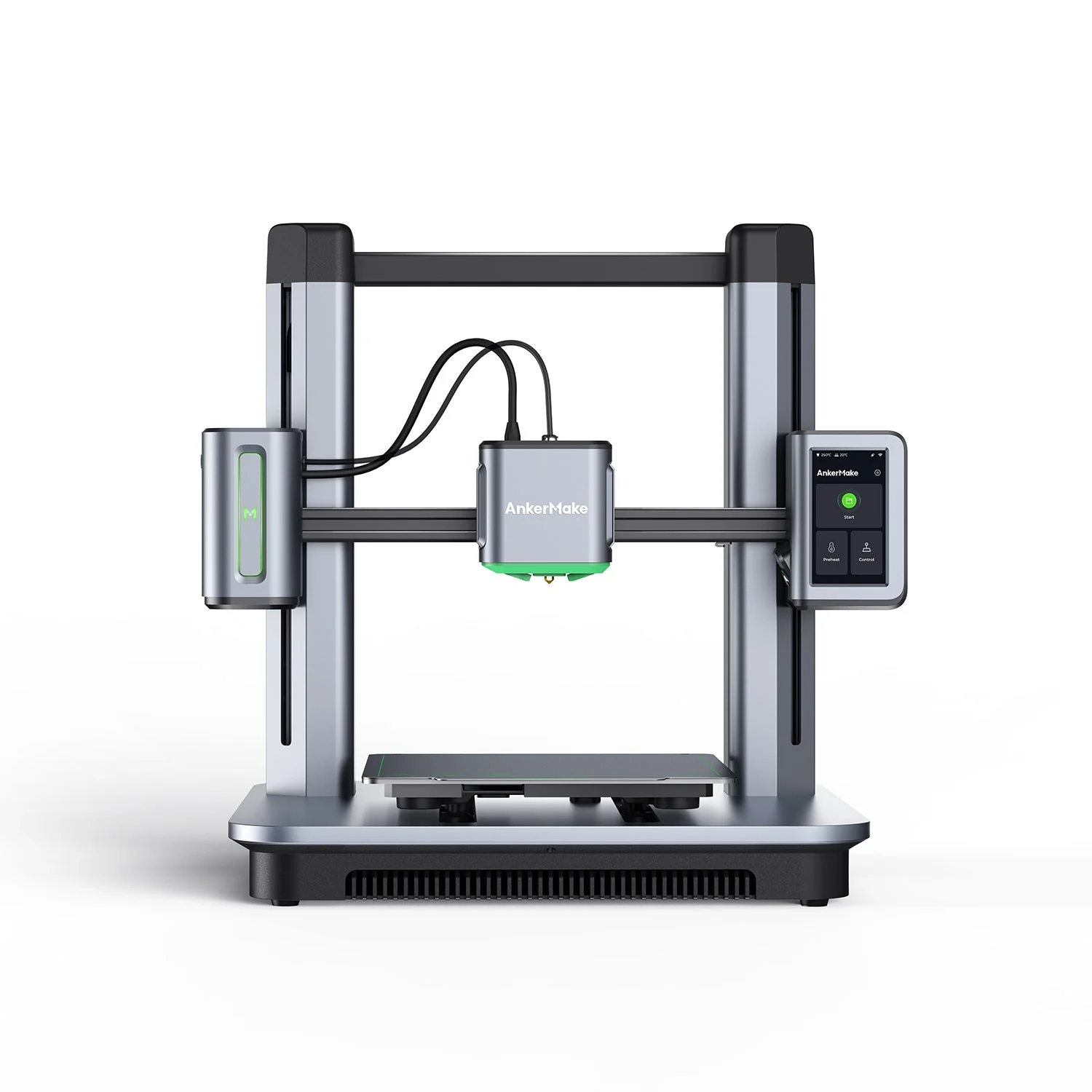Compare A8 V2 vs M5
Comparison between the best 3D printers
Choose the best 3D printer at the best price. The cheapest 3D printers are here.
Buy a 3D printer here with 3D Fila.
 |
 |
|
| Model | A8 V2 |
M5 |
| Printing Material | Filament | Filament |
| Buy Filament for Anet A8 V2 | Buy Filament forAnkerMake M5 | |
| Estimated price | $129,00 | $497,00 |
| Manufacturer | Anet | AnkerMake |
| Release Year | 2021 | 2023 |
| Print Volume [mm] | 220x220x250 | 235x235x250 |
| Printer Size [mm] | 428x441x486 | 502x438x470 |
| Weight [kg] | 6,2 | 12,6 |
| Power Loss Recovery | NO | YES |
| Enclosed printer | NO | NO |
| Bed Leveling | Manual | Automatic |
| Filament End Sensor | NO | YES |
| Bed type | Heated | |
| Power supply system | Bowden | Direct Drive |
| Standard nozzle | 0,4 | 0,4 |
| Maximum Nozzle Temperature [°C] | 230 | 260 |
| Maximum Bed Temperature [°C] | 100 | |
| Maximum printing speed [mm/s] | 150 | 500 |
| Filament holder | YES | YES |
| Camera for supervision | NO | NO |
| Recommended filaments | PLA | PLA, PETG, ABS |
| Recommended slicers | Cura, Simplify, Slic3r, IdeaMaker | AnkerMake Studio (macOS, Windows), Simplify3D, Ultimaker Cura, PrusaSlicer |
| Maximum Resolution [mm] | 0,1 | 0,1 |
| Processor | ||
| Display | Display touchscreen 2,8'' | Touchscreen 4,3'' |
| Power Supply | 110/220V / 250W | 350 W |
| Connectivity | SD / USB | Wi-Fi, USB-C, OTA Upgrade |
| Operating systems | Windows, Mac, Linux | Windows, Linux, Macbook |
| Date of registration in the system | 2022-11-10 | 2024-07-08 |
| Release date | 2021 | 2023 |
| Extra features | The Anet A8 V2 is a Cartesian-XZ type 3D printer with a build volume of 220 x 220 x 250 mm, Ender 3 design and V-slot assembly. It has a 32-bit motherboard and touchscreen interface, promising ease of use. It uses open source firmware and has thermal failure protection. It stands out for its cable organization and the absence of a heated bed, focusing on energy savings and PLA printing. It comes with an external power adapter, aiming at greater safety, especially for beginners and educational use. | The AnkerMake M5 printer stands out for its impressive print speed, reaching up to 500mm/s. It features AI print monitoring, an integrated camera for creating timelapses, auto-leveling bed with pressure sensor, direct extruder, flexible PEI-coated build plate, and Wi-Fi and USB-C connectivity. Assembly is quick and easy, and the printer is designed to deliver high print quality and ease of use. |
| Support for multiple colors and materials (AMS and CFS) | NO | NO |
Notes * |
||
| Cost-benefit | 6 / 10 | 7 / 10 |
| Hardware | 0.5 / 10 | 3.5 / 10 |
| Tela | . | . |
| Print volume | 3 / 10 | 3 / 10 |
| Performance | 1 / 10 | 4 / 10 |
Conclusion |
| In evaluating the Anet A8 V2 and the AnkerMake M5, several key differences emerge that cater to varying user needs and preferences. The **Anet A8 V2**, being a budget-friendly option, appeals to beginners and those prioritizing cost over advanced features. Its open-source firmware and straightforward design are beneficial for users looking to customize their printing experience. However, the manual bed leveling and lack of features such as power loss recovery and filament end sensor may limit its functionality and ease of use compared to newer models. Conversely, the **AnkerMake M5** justifies its higher price point with a plethora of advanced features geared towards enhancing print quality and user convenience. Its automatic bed leveling, efficient print speed, and direct drive system are significant advantages for more experienced users or those who anticipate a higher volume of prints or varied materials. The integrated camera and robust connectivity options further solidify its position as a technologically sophisticated choice. Ultimately, the choice between these two printers hinges on user priorities: the Anet A8 V2 is ideal for budget-conscious hobbyists or educational purposes, while the AnkerMake M5 is better suited for those seeking high performance, versatility, and ease of use in their 3D printing endeavors. |

